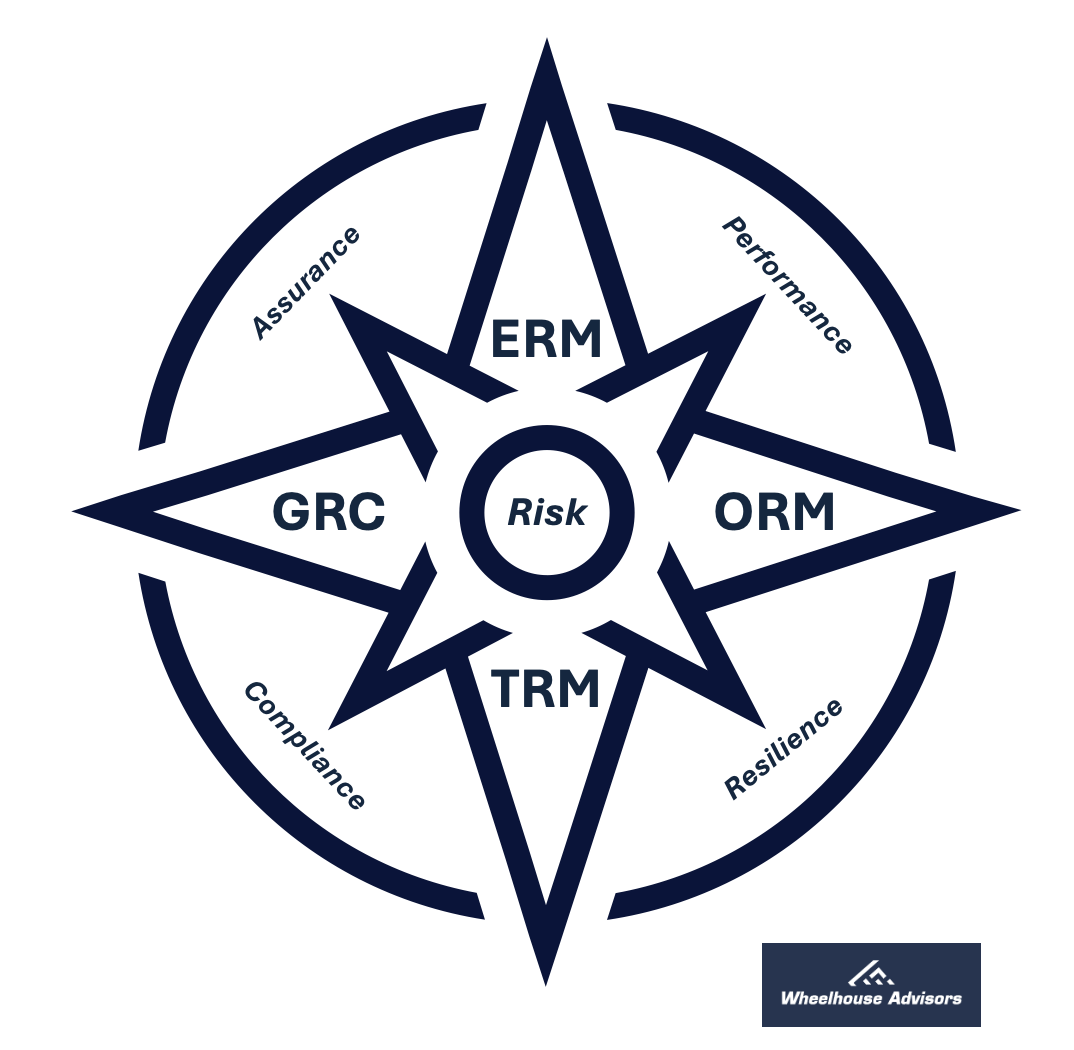Balancing Innovation and Risk: AI’s Role in Boardroom Strategy
As artificial intelligence (AI) steadily integrates into corporate governance, boardrooms are witnessing a transformative shift. The concept of a 'robo-director,' where AI provides insights alongside human board members, is becoming a reality. This emerging trend raises significant questions about governance, oversight, and risk management. Wheelhouse Advisors' IRM Navigator™can play a pivotal role in navigating these uncharted waters, ensuring that AI is leveraged effectively while mitigating associated risks.
The Rise of AI in Governance
AI's potential to enhance decision-making in corporate boardrooms is undeniable. AI is beginning to support strategic decisions by analyzing extensive datasets and providing impartial advice. This reflects a broader trend across various industries, where AI tools are increasingly assisting boards in advisory capacities. These tools offer unbiased input, avoiding conflicts of interest and enhancing decision-making processes.
However, AI's introduction into boardrooms also brings challenges. The journey is just beginning, and the governance landscape is still grappling with the implications of AI integration. Boards must address legal, ethical, and operational risks associated with AI adoption. This is where Wheelhouse Advisors' IRM Navigator™ becomes crucial, ensuring that AI adoption aligns with regulatory requirements and corporate governance standards
Strategic Implications and Risks
The strategic implications of AI in corporate governance are profound. AI has the capacity to disrupt entire industries, creating new business opportunities while presenting new risks. Boards need to understand how AI is currently used by their company and competitors, and how it may disrupt their industry. They must assess the strategic opportunities AI presents, along with the operational, financial, compliance, and reputational risks.
The introduction of AI into boardrooms necessitates a robust approach using the IRM Navigator™. For instance, AI's involvement in M&A activities can streamline pre-deal analyses but also introduces potential errors and regulatory uncertainties. The IRM Navigator™ can help boards navigate these challenges by establishing clear guidelines for AI use, conducting regular audits, and defining ethical principles for AI deployment.
Legal and Ethical Oversight
AI's ability to enhance decision-making processes also brings significant legal and ethical considerations. Boards must ensure transparency and proactive governance in AI integration. Shareholders and regulatory bodies are increasingly scrutinizing how AI is integrated into business strategies. Boards must ensure that AI strategies and risks are clearly communicated to stakeholders. Establishing AI ethics advisory boards and integrating these insights into enterprise risk management functions are essential steps.
In her article "AI and the Role of the Board of Directors," Holly J. Gregory of Sidley Austin LLP highlights the need for board oversight in AI-related activities. Gregory emphasizes the importance of understanding AI as a matter of corporate strategy and risk, considering the impact of AI on employees, customers, and other stakeholders, and overseeing compliance with AI-related laws and regulations. This aligns with the IRM Navigator™ approach to integrating AI into risk management frameworks, ensuring that AI adoption is both responsible and aligned with corporate values.
The IRM Navigator™ Framework
The 2024 IRM Navigator™ Annual Viewpoint Report by Wheelhouse Advisors outlines a comprehensive framework for managing the multifaceted risks associated with digital transformation and AI integration. The framework is built around four key objectives: performance, resilience, assurance, and compliance. These objectives are integral to managing risks effectively across all areas of an organization:
Performance: Targets achieving strategic goals while managing risks that could affect outcomes.
Resilience: Ensures the organization can withstand and recover quickly from disruptions, particularly in digital products/services, information technology (IT), and operational technology (OT) systems.
Assurance: Provides confidence that risk management processes are effective and comprehensive.
Compliance: Focuses on adhering to laws and regulations, avoiding penalties, and maintaining a robust control framework.
Each objective supports and reinforces the others, creating a cohesive strategy that enhances the organization's ability to navigate a complex risk landscape. This integrated approach addresses immediate risks and positions the organization for long-term success.
Building AI Governance Structures
Effective AI governance requires the establishment of oversight committees and the integration of AI into risk management frameworks. Boards must balance the opportunities presented by AI with the need for rigorous oversight. Continuous education for board members is crucial, as AI advancements are rapid and complex. The IRM Navigator™ can support this by defining competency requirements and facilitating ongoing training.
AI's ability to enhance corporate monitoring, talent acquisition, and investment decisions can free governance professionals to focus on strategic issues. However, the key lies in ensuring that AI is used transparently and ethically. The IRM Navigator™ can guide boards in integrating AI seamlessly into governance processes, from real-time information access to automated agenda planning.
Take Control of Your Boardroom's Future with IRM Navigator™
The future of AI in corporate governance hinges on striking a balance between embracing its potential and implementing robust oversight. The IRM Navigator™ is instrumental in achieving this balance, fostering a proactive culture around AI from the outset. By setting the right tone and ensuring that AI integration aligns with corporate values and regulatory standards, boards can navigate the evolving landscape with confidence.
As AI continues to evolve, its role in boardrooms will expand, transforming governance activities and decision-making processes. Proactive integration, robust oversight, and consistent transparency are essential for harnessing AI's power. With the IRM Navigator™, boards can ensure that they are well-equipped to leverage AI's benefits while mitigating its risks.
To stay ahead of the curve, organizations must act now. Embrace the IRM Navigator™ framework to turn potential risks into opportunities for growth and innovation. Equip your boardroom with the tools to navigate the complexities of today’s business environment and emerge stronger, more resilient, and ready for the future.
References:
Noer, Brian. "Rise of the ‘robo-director’: How AI is shaping the future of corporate boardrooms." Governance Intelligence, July 5, 2024.
Gregory, Holly J. "AI and the Role of the Board of Directors." Harvard Law School Forum on Corporate Governance, October 7, 2023.
Wheelhouse Advisors. "2024 IRM Navigator™ Annual Viewpoint Report."

